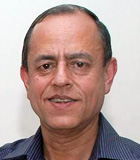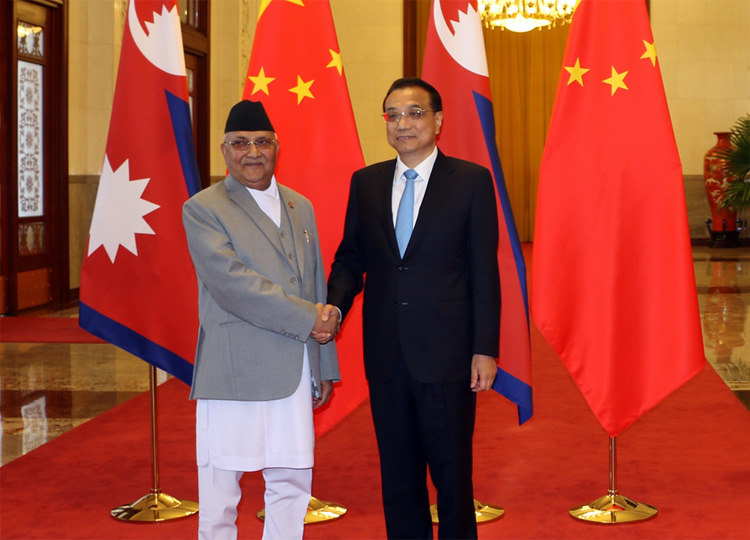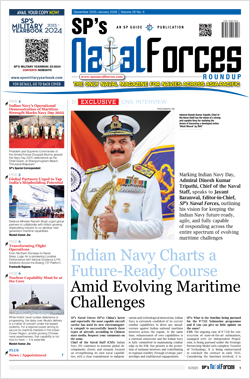INDIAN ARMED FORCES CHIEFS ON OUR RELENTLESS AND FOCUSED PUBLISHING EFFORTS

The insightful articles, inspiring narrations and analytical perspectives presented by the Editorial Team, establish an alluring connect with the reader. My compliments and best wishes to SP Guide Publications.

"Over the past 60 years, the growth of SP Guide Publications has mirrored the rising stature of Indian Navy. Its well-researched and informative magazines on Defence and Aerospace sector have served to shape an educated opinion of our military personnel, policy makers and the public alike. I wish SP's Publication team continued success, fair winds and following seas in all future endeavour!"

Since, its inception in 1964, SP Guide Publications has consistently demonstrated commitment to high-quality journalism in the aerospace and defence sectors, earning a well-deserved reputation as Asia's largest media house in this domain. I wish SP Guide Publications continued success in its pursuit of excellence.
- Global Partners Urged to Tap India's Shipbuilding Potential: Rajnath Singh at Samudra Utkarsh
- All about HAMMER Smart Precision Guided Weapon in India — “BEL-Safran Collaboration”
- India, Germany deepen defence ties as High Defence Committee charts ambitious plan
- G20 Summit: A Sign of Global Fracture
- True strategic autonomy will come only when our code is as indigenous as our hardware: Rajnath Singh
- India–Israel Joint Working Group Meeting on defence cooperation to boost technology sharing and co-development
Nepal in Dragon’s Jaws
 |
By Lt. General P.C. Katoch (Retd) Former Director General of Information Systems, Indian Army |

China has agreed to allow Nepal to use four seaports and three land ports for the third country trade. The seaports are Shenzen, Lianyungang, Zhanjiang and Tianjin, and the land ports are Lanzhou, Lhasa and Xigatse. Chinese authorities will provide permits to the trucks and containers in Nepal ferrying Nepal-bound cargo to and from Xigatse of Tibet. Nepali traders will be allowed to use any mode of transport- rail/road to access to sea ports for the third country trade. Nepal and China have finalized protocol of Transit and Transport Agreement (TTA) to access the Chinese territory from six checkpoints - Rasuwa, Tatopani (Sindhupalchok), Korala (Mustang), Kimathanka (Sankhuwasabha), Yari (Humla), Olangchung Gola (Taplejung). The protocol will reportedly be exchanged during the next high-level visit from Nepal to China or vice versa.
The TTA, signed in March 2016 during PM KP Sharma Oli’s China visit, will come into force once the protocol is exchanged. The general reaction in our media is that it will not affect India-Nepal much because distance of abovementioned Chinese seaports is quite large compared to that of Indian seaports; Nepal-Tianjin 3,276 km, Nepal Lianyungang 3,379 km, Nepal-Shenzen 3,064 km, and Nepal Zhanjiang 2,755 km, compared to distance from India’s seaports Nepal-Kolkata 774 km and Nepal-Vishakhapatnam 1,194 km. Therefore, it is felt that Nepal will remain dependent on India, which may be true to some extent. But significantly, it is Nepal which sought access to Chinese ports, knowing fully the distances involved.
Nepal took this step because of the prolonged blockade of India-Nepal border during 2015-2016 during the Modi Government causing severe fuel and medicine shortages for months. It is also a fact that road conditions and train speeds are much better on the Chinese side which compensate for distances. According to media reports, traders feel lack of proper roads and customs infrastructure on the Nepalese side poses challenges, but China can be trusted to assist Nepal put things in place in record time. Also, China will use subsidies to wean Nepal away from India. Indian scholars have repeatedly repented India’s lack of strategic culture. After proclaiming a ‘Neighbours First’ policy, the blockade was a foolish move. Earlier, India used to laud Nepal as the sole ‘Hindu Kingdom’ but then helped abolish Nepal’s constitutional monarchy and Maoists coming to power. Indio-Nepalese relations suddenly faced a setback when a Nepalese Army contingent was stopped just a day before departure to participate in the first Bay of Bengal Initiative for Multi-Sectoral Technical and Economic Cooperation (BIMSTEC) counter-terrorism exercise in India, even though Prime Minister Modi announced the exercise at the BIMSTEC meet and Thailand too did not participate. Reason cited was “criticism from different quarters”, which Oli can override. But stopping the contingent with three officers having reached exercise venue, was possibly Chinese diktat and snub to India with Nepalese Army participating in a two-week counter-terrorism exercise in China later same monthNepal’s Army Chief also declined Indian Army’s invite to attend conclave of BIMSTEC defence heads.
It is no secret that the Maoist insurgency in Nepal was initiated by China more than six decades back with the ultimate aim of installing a regime in Kathmandu not friendly with US or India. After 19,000 plus Nepalese killed during the civil war and 100,000-150,000 internally displaced, finally China managed to combine the two Communist parties of Nepal and install the present Left Alliance (CPN-UML) dominated government in Nepal. China overtook India in establishing industries by 2013, opened employment opportunities through industries and projects including energy and hydro-power, established Confucius Institute in Kathmandu, increased military cooperation, and improved communications linking Nepal with China. China’s immediate gains included Nepalese curbs on Tibetans and Buddhists, making their lives hell, with some handed over to China. Nepalese Maoists admit “full support” to Maoist movement in India.
Pushpa Kamal Dahal alias Prachanda, erstwhile PM had told media few years back, “The ultimate war will be with the Indian Army”. PM KP Sharma Oli vowed to stop Nepalese from joining Indian Army in February 2018. With Talban on its side, China is adept in using Islamists, which needs caution as China-Pakistan incorporate Nepal in strategically encircling India. Pakistani PM was the first foreign head to visit Nepal in March 2018 after Oli became PM. 97% of over 100,000 Nepalese Muslims live in Terai region bordering India, with balance in Kathmandu and western hills. Pakistan’s ISI is present in Nepal and Nepal is fast becoming ISI ‘Control Centre as per reports by the Intelligence Bureau. Nepal has permitted China oil drilling in Terai and despite framing policy to curb NGOs, has recently permitted 30 Chinese NGOs, allowing them to penetrate the Nepal’s social sector and the grassroots; anti-India perception building will be high on the agenda. Soon PLA may emerge in Terai region, in garb civilians or otherwise. Nepal is deploying drones on Indo-Nepal border, obviously Chinese, that can assist infiltration, and arms, narcotics smuggling, under China’s concept of ‘Unrestricted Warfare’. India needs to be cautious and shape its foreign policy vis-à-vis Nepal taking the above into account.





